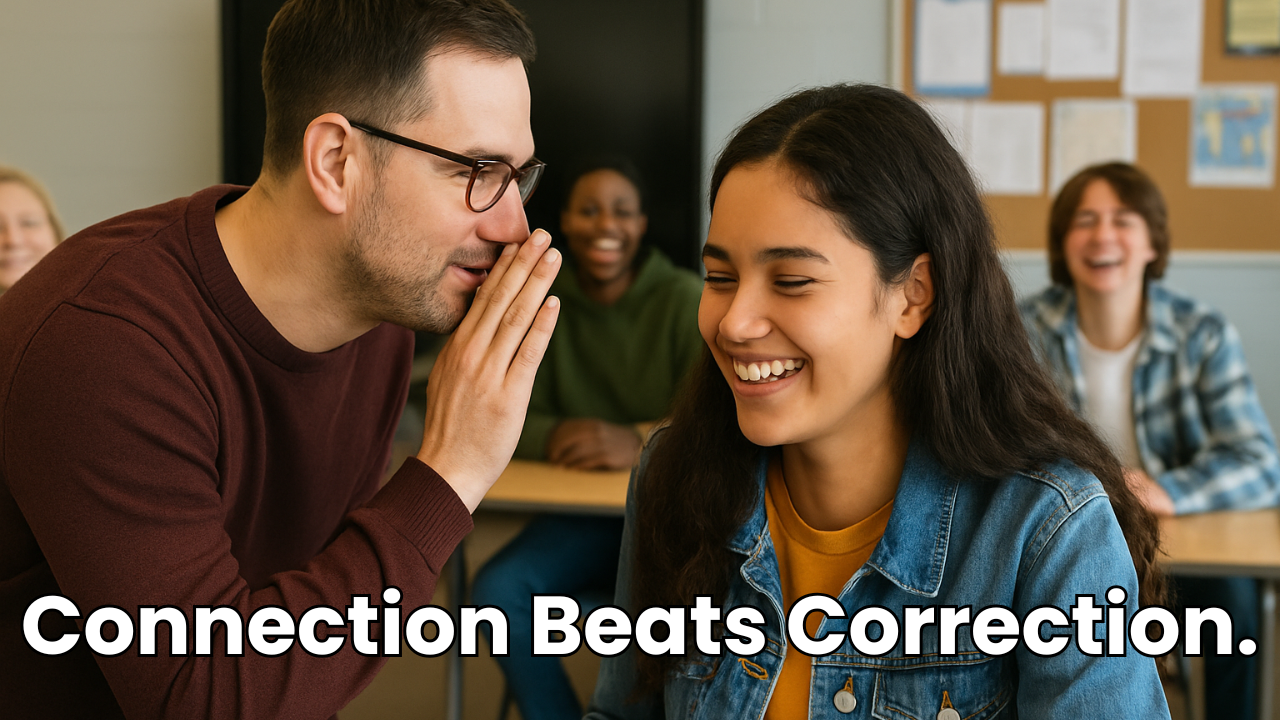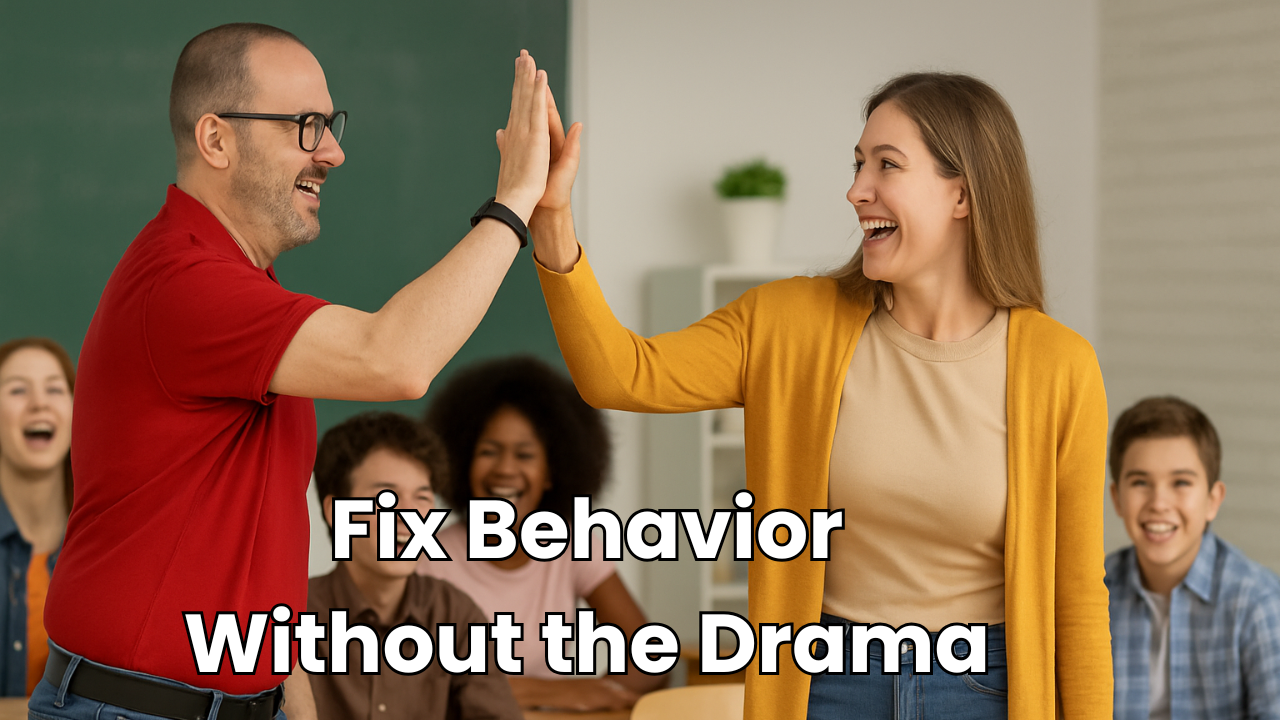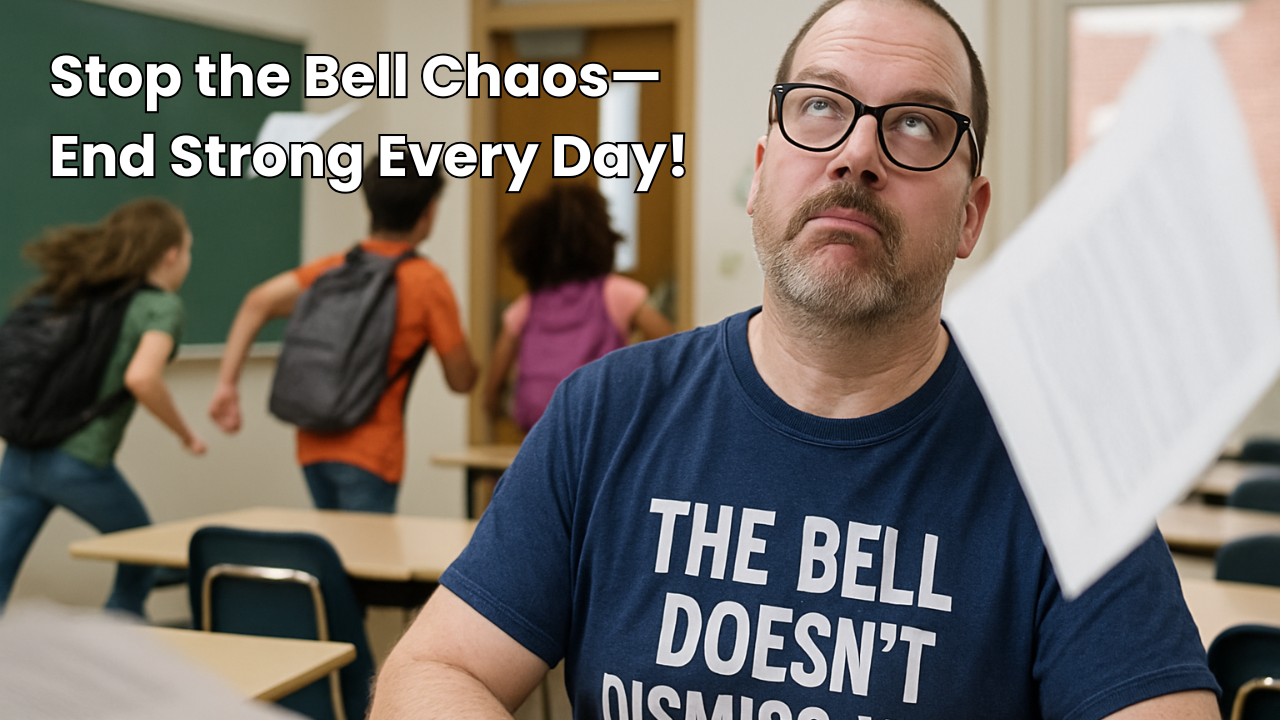
We all know that comprehensible input is the key to language acquisition, but did you know, that according to Stephen Krashen, 70% of your language ability comes from reading?
If you already knew this fact, type 70 in the comments below!
Reading is chock full of vocabulary, grammar, and sentence structure for students to acquire, and in this video, we'll talk about strategies for effective reading practices to harness all that potential and maximize textual input.
3 Steps of Reading
Whenever I read any text with beginners, I follow 3 steps: 1) read chunk in target language, 2) students chorally translate chunk into common language, and 3) we discuss as a class in target language.
Let me break that down for you.
First, we read a chunk in the target language. That chunk depends on your class, but it can be a sentence or two, a paragraph, or an entire page.
As I read the text, I have it projected on the board and point to the words as I read them.
This helps students associate the sounds with the letters and words, especially for languages that aren't phonetic. Yes, I'm talking to you, FRENCH! 🙂
Second, I have the students chorally translate.
This is NOT to practice translation, but to level the playing field so that all students understand the text before we start to talk about it.
I prefer to have my students translate word-for-word so they can feel the syntax of the target language.
I'll point to the words on the board and students will translate that word, one word at a time, in unison.
If there is a word that I know they don't know, I will quickly translate it for them and then we continue on.
Lastly, we discuss the chunk in the target language.
I start by asking any content questions. These are the who, what, where, and when about the chunk you just read.
I make sure to ask yes/no, either/or, and question-word questions to both individuals and to the whole class.
If there are any cultural or thematic elements, I will ask questions about those after we talk about the content.
Reading for Advanced Beginners and Beyond
Once students are beyond the true beginner phase, the three steps can get a little repetitive.
To fix this, I modify the three steps slightly to adapt to my students' levels of comprehension.
I will continue to read in the target language a chunk of text, but instead of having the students chorally translate word-for-word, I'll translate only words I think they don't know or they ask about.
And just to check for comprehension, I'll often ask them what other words that I don't translate mean. These are words that I think they should already know.
Pro tip: if there's vocabulary that I think is really important and it repeats itself throughout the text, I will ask my students what that word means EVERY time it comes up.
For example, in the novel we are currently reading, the word "while" comes up frequently and is a difficult word to remember. So every time it comes up in the novel, I ask my students what it means. By the end of the novel, there's no way they don't know what the word for "while" is!
After I've read the chunk in the target language and translated any unknown words, we will then discuss the chunk in the target language.
Silent Reading
We want to build strong independent readers and one way to do that is with silent reading.
This has been a mainstay in American classrooms even when I was a kid in the 70s.
The idea is that students self-select a book and read it silently for a designated time period.
The key to making silent reading successful is to have a wide variety of books for students to choose from.
I know budgets are tight, so here are some ways you can build your library!
If you're a public school, you can use a crowd-funding site like donorschoose.org. Here you will set up a wishlist from the vendors they allow and you can promote your wishlist to get it fulfilled.
They often have promotions where donations are matched and sometimes, large companies will fund your whole wishlist in one fell swoop.
Another option is to see if your school library or department has a budget for books.
Often there is money earmarked in the department budget or in the library budget for books for the classroom. It never hurts to ask!
My last option I've been using all year and it's been incredible.
I created a school wishlist on Amazon and promoted it on back-to-school night and in my email signature.
What's great about this is that instead of having to wait for the whole wishlist to be funded like with donorschoose, families can purchase a book or two outright and they get sent immediately to you!
I love going to my mailbox and finding a new Amazon package in there!
I quickly write a thank you note to the family and inside the book cover, I'll write, "Donated by..." and either the student's name or the family name.
Now when filling your library, I highly suggest that you stock it with comprehension-based NOVELS, rather than children's books.
Comprehension-based novels are written with language learners in mind and limit vocabulary to a manageable number.
Children's books are often too difficult for students to read and contain a lot of vocabulary students aren't familiar with.
One last thing before we move on from silent reading.
It is EXTREMELY important that during this time that YOU READ TOO!
This is not time for you to catch up on email or grading or social media on your phone.
You need to set the example and read yourself!
If students don't see you reading, they'll think that it's not important and will not do it.
You need to let them know that it IS important and the easiest way you can do this is by reading yourself!
Extended Reading
Extended readings are texts of 300 to 500 words. Often they can be extensions to the class story you co-created the day before or you can write one from scratch!
If you write one from scratch, you'll want to be sure to focus on the same vocabulary and structures you did for your co-created class story.
Personally, I prefer to write one from scratch. But instead of writing a different one for each class, I'll write a different one for each level, but include students from each class in the story.
This way, each class feels a connection with the story without my having to write an individualized story for each class.
I love taking information that I know about students and writing stories around that. It builds community and comradery in class that a generic story just couldn't accomplish.
I try to write my stories for my struggling students with some advanced sentences for my superstars.
However, if I think that even that is too difficult for some students, I'll create multiple embedded-reading versions to scaffold the text.
You can watch this video to learn more about embedded reading.
Read Aloud
Reading aloud to students is extremely important when it comes to developing independent reading skills.
Don't believe me? Check out Jim Trelease's book, "The Read-Aloud Handbook."
In his book, Jim talks about the benefits of reading aloud to all age groups and you'll want to include this important form of reading in your reading toolbox.
We talked before about how children's books often use too many words out of reach for our students for independent reading, but for read-alouds, they are perfect.
I'll pick a high-interest children's book and project it on screen with a document projector.
Then, depending on the level of my students, I'll read them the book, asking lots of questions along the way.
For true beginners, I'll just talk about the pictures and ignore the text altogether.
For advanced beginners, unless the text is really simple, I'll talk about the pictures and summarize the text in simple language. I'm still asking a lot of yes/no, either/or, and question-word questions about what we read.
For non-beginners, I'll read the actual text along with describing the pictures, again asking as many questions as I can before turning the page.
Depending on the book, this can take one to two class periods, and to make it more engaging for the students, I let them bring a snack and a stuffed animal to cuddle with during the reading.
Whole-class Novel
The last type of reading is the whole-class novel.
This is where you choose a high-interest novel that is just above the reading level of your students and you work through the novel together as a class.
Now that doesn't mean you'll read the entire novel with your students!
Remember the goal is to create independent readers. So with my true beginners, I'll read the first novel with them from the first page to the last following the 3-steps of reading (I read, they translate, we discuss).
We will stop after every chapter to discuss what happened in the chapter, and talk about any culture or themes that come up.
I also like to do a write & discuss after every chapter to have an easy-to-read summary for the students.
But with the second novel we read together, I'll read the first half with the students as a class, and then follow my 3-2-1 Reading strategy for the rest of the novel. You can find the link to this strategy in the description below.
For my level 2s and above, I generally will read the first half of the first novel with them using the modified 3 steps. And then I'll move to 3-2-1 reading strategy for the last half of the book.
On their second novel, I'll start right away with the 3-2-1 reading strategy as they'll be more accustomed to reading novels.
It's important to know that no matter how you read your novel with your class you take the time to discuss what happened, and address any themes or culture after each chapter. This is where the magic happens.
I generally read two novels a year with my students. We generally start our first novel about mid-November and our second novel, late March.
Follow-up Activities
There are a lot of follow-up activities you can do after you read a piece of text.
One of my favorites is not necessarily a follow-up activity but rather a while-you-'re-deep-in-it activity.
I like to have students act out the text after we read it to bring it more to life.
For extended readings, we'll act out the whole story, but for novels, I'll pick one or two action-packed scenes to act out.
If you do it too much, it becomes old, but once or twice a novel is a good amount to keep students' interest.
Another activity I like my students to do is to illustrate a story or a chapter.
I'm not looking for masterpieces here or really anything too detailed.
I'll have my students make a 4- or 6-frame storyboard and illustrate the main points.
What I'm looking for is the demonstration that they understood the broad strokes of the text.
Smash Doodles are another way students can demonstrate comprehension. I don't have time here to explain how to do Smash Doodles, but if you want me to make a video on it, please drop a comment below!
A simple explanation is that smash doodles are a combination of text and drawings that students create to demonstrate comprehension.
I'll link to an explanation article by Martina Bex in the description below.
Those are a few activities to get you started. You can always Google for more ideas. There are literally tons of post-reading activities you can do with your students.
Accountability
I always struggle with holding students accountable with silent reading. I know the research says don't do much in the way of assigning "homework" to silent reading as you'll turn reading into a chore rather than a pleasurable activity, but the reality is, that I work with middle-school students and if there isn't some sort of accountability built in, my students just won't do it.
Your students may be different, so you decide how you want to handle this.
For me, the compromise is that every two months, I have my students create a 5-minute book report.
These are usually in the form of a graphic organizer or a Google form gathering key information to show that they read the book.
These generally take less than 5 minutes for the students to complete and each one is different. So they never do the same type of book report twice in one year.
You can either have them self-select whichever format they want to do when, knowing they can't repeat any, or you can assign a format for each book report.
You can download my FREE Book Report Ideas and graphic organizers at imim.us/bookreports.
If you want to learn more about comprehensible input and how you can implement it in your classroom, check out our Webversity Course at imim.us/webversity.
This is a pre-recorded course that details every aspect of comprehensible input, including assessment in the modern-language classroom. Hundreds of teachers have gone through it since we implemented the course in 2010. It started with only 12 lessons and is now over 30 lessons! Get the help and support you need with our Webversity Course.
Happy Comprehensible Input!



